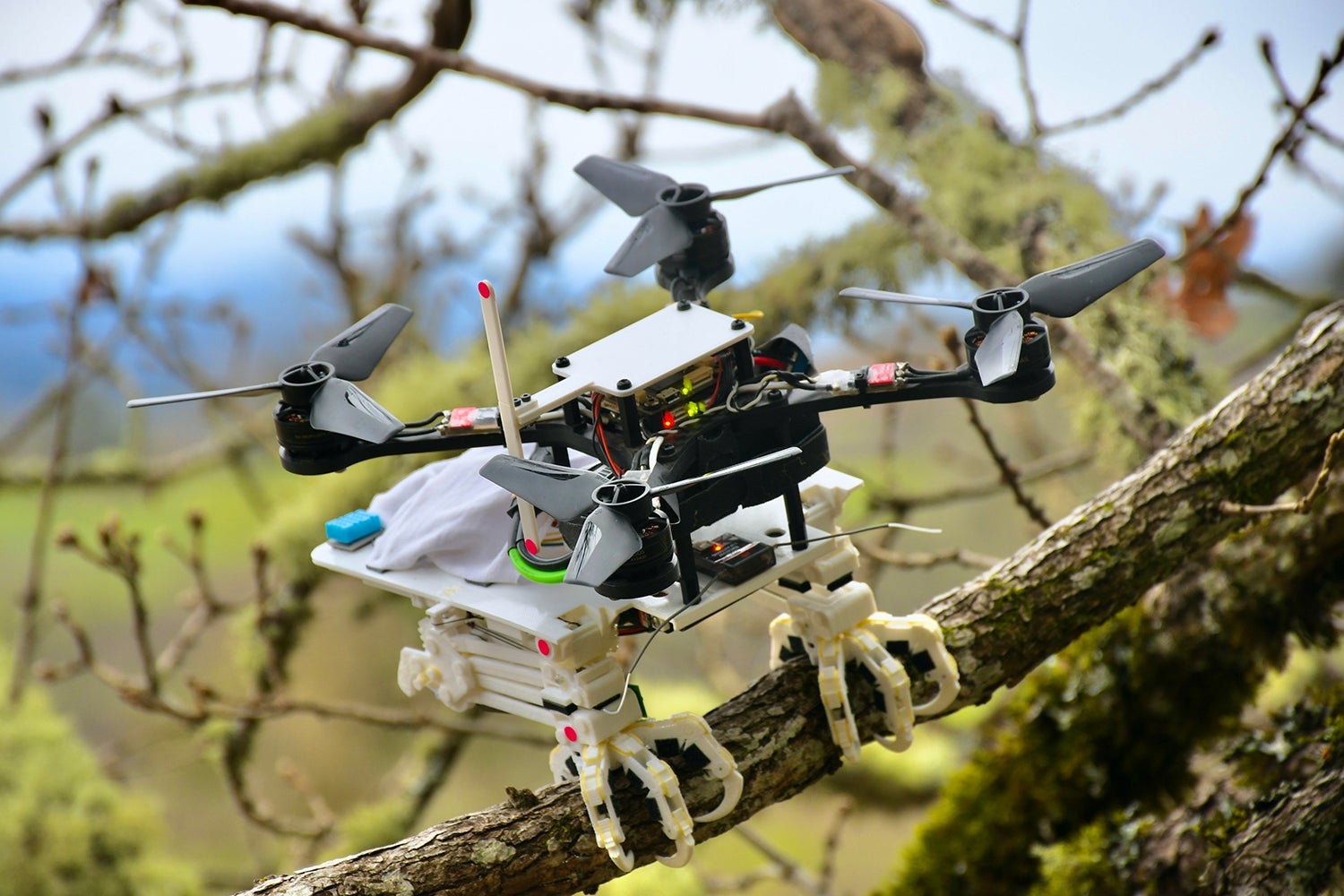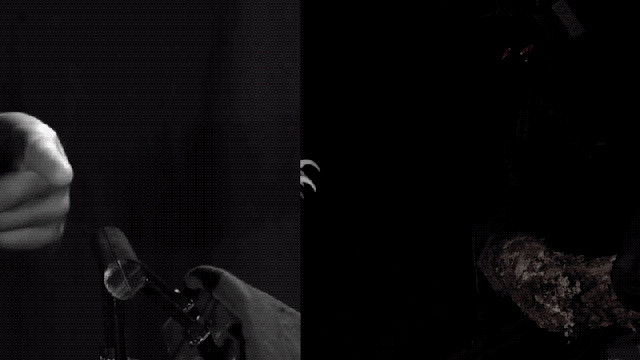A newly developed, bio-inspired aerial robot can land on a variety of branches and carry objects like a bird.
“Birds take off and land on a wide range of complex surfaces,” while “current robots are limited in their ability to dynamically grasp irregular objects,” declares the opening paragraph of a new research paper published in Science Robotics. Indeed, bird landings look so effortless, but it’s “not easy to mimic how birds fly and perch,” William Roderick, a roboticist at Stanford University and a co-author of the study, explained in a Stanford release.
Working with Stanford University engineers Mark Cutkosky and David Lentink (now at the University of Groningen in the Netherlands), Roderick sought to build a bona fide perching robot. Levering insights from Cutkosky Lab, which specialises in animal-inspired robots, and Letink Lab, which focuses on bird-inspired aerial bots, the team designed, built, and tested a “biomimetic robot that can dynamically perch on complex surfaces and grasp irregular objects,” according to the paper.
The new contraption is called SNAG, which stands for “stereotyped nature-inspired aerial grasper.” By “stereotyped,” the engineers are referring to the formulaic behaviour involved in bird landings. Previous research showed that birds employ the same grasping technique regardless of the surface. As Roderick put it, birds “let the feet handle the variability and complexity of the surface texture itself.”
SNAG’s feet and legs were modelled after those of peregrine falcons, but instead of wings, this robot achieves flight with a quadcopter drone. Made from lightweight materials, it can carry 10 times its own weight. The bot’s “bones” are made from 3D-printed plastic, while its muscles and tendons are built from motors and fishing line. Each leg has its own motor and is capable of 14 degrees of freedom. A servomotor on SNAG’s hip “orients the leg right before perching and balances the robot after landing by rotating the centre of mass toward the centre of the perch similar to a bird,” the engineers write in their paper.
During landing, the legs absorb the impact energy and convert it into grasping force. The rapid clutching action happens at durations spanning less than 50 milliseconds. Once the claws have grasped onto a branch, the ankles lock and an accelerometer, sensing the landing, triggers a balancing algorithm for stabilisation. Experiments showed that the timing of the trigger was critical. “Too early makes the leg too stiff to fully collapse, while too late reduces the energy absorbed and thus increases the likelihood of damage,” the engineers write, adding that the “timing of leg muscle and tendon tension onset may be equally important in birds and other animals.”

Controlled testing of SNAG was conducted in a lab and in a forested environment. The robot was launched at a bunch of different tree branches, at different speeds and orientations. SNAG was also able to catch objects tossed by hand, such as a cornhole bag and tennis ball.
A future version of SNAG could perform wildlife monitoring, search and rescue, and conduct environmental research. “Part of the underlying motivation of this work was to create tools that we can use to study the natural world,” Roderick said. “If we could have a robot that could act like a bird, that could unlock completely new ways of studying the environment.” And in fact, it already did some of the latter, as the aerial robot measured microclimates in a remote Oregon forest using onboard temperature and humidity sensors.
SNAG could also offer new insights into biology, and again, it’s already done a bit of this. In addition to the aforementioned insights about leg muscle timing and tendon tension onset, the engineers learned that, when it comes to perching performance, the arrangement of toes doesn’t really matter. This would seem to suggest that “perching does not form an evolutionary selection pressure that can, by itself, explain arboreal avian toe diversity,” according to the study.
With SNAG sticking its landings with ease, the team is now looking ahead to improving pre-landing elements like situational awareness and flight control. We’re very much looking forward to seeing where the engineers take this exciting project.
More: Creepy New Drone That Walks and Flies Is a Robopocalypse Nightmare Come True.
